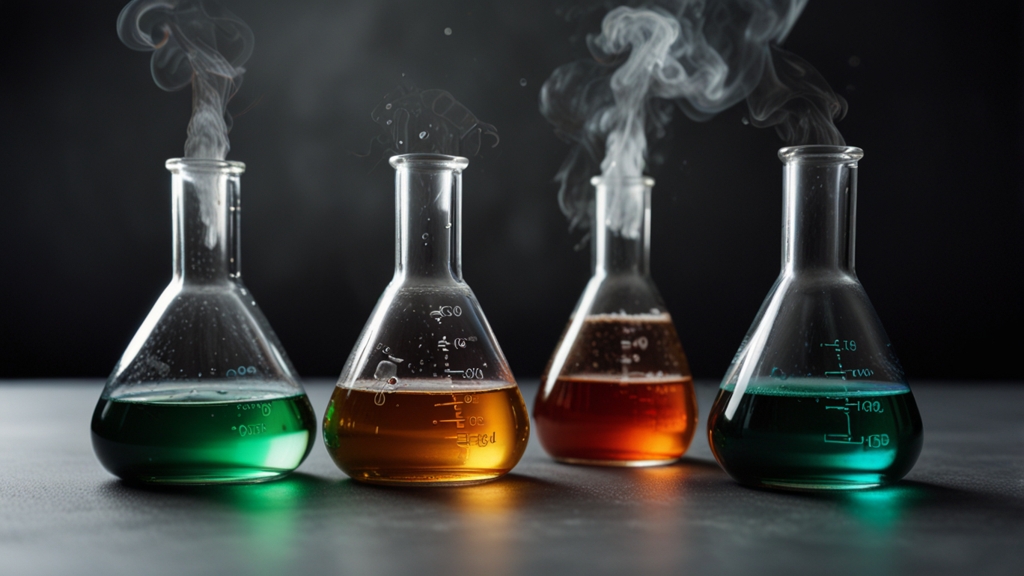Chemistry's Role in Climate Change: The Science We Need to Know
Climate change is one of the most critical issues facing our world today, and understanding its mechanisms requires a deep dive into the chemistry behind it. From the greenhouse gases contributing to global warming to the chemical reactions that deplete our ozone layer, chemistry plays a pivotal role. This article explores the fundamental chemical processes that drive climate change and the scientific insights necessary for mitigating its effects.
Greenhouse Gases and Their Impact
One of the primary reasons for the increase in Earth's average temperature is the accumulation of greenhouse gases in the atmosphere. These gases, including carbon dioxide (CO2), methane (CH4), and nitrous oxide (N2O), trap heat from the sun, creating a "greenhouse effect." The basic chemical reaction for the formation of carbon dioxide is:
C + O2 → CO2
While carbon dioxide is a natural part of the Earth's carbon cycle, anthropogenic activities like burning fossil fuels and deforestation have drastically increased its concentration. This imbalance enhances the greenhouse effect, leading to a rise in global temperatures.
Methane and Nitrous Oxide
Methane (CH4) is another potent greenhouse gas, although it is present in smaller quantities compared to carbon dioxide. The primary sources of methane include livestock digestion, rice paddies, and natural gas extraction. Methane is approximately 25 times more effective than CO2 at trapping heat over a 100-year period.
Nitrous oxide (N2O) emanates mainly from agricultural activities, such as fertilization, and is about 298 times more potent than carbon dioxide. The chemical processes involved in nitrous oxide formation often involve the breakdown of fertilizers containing nitrogen compounds.
The Ozone Layer and Its Significance
The ozone layer, located in the stratosphere, plays a crucial role in protecting life on Earth by absorbing harmful ultraviolet (UV) radiation from the sun. However, certain human-made chemicals called chlorofluorocarbons (CFCs) have been responsible for depleting this protective layer. The breakdown of CFCs releases chlorine atoms, which then react with ozone (O3) to form oxygen (O2):
Cl + O3 → ClO + O2
ClO + O → Cl + O2
This chain reaction continues, with a single chlorine atom capable of destroying thousands of ozone molecules. Fortunately, international agreements like the Montreal Protocol have led to a significant reduction in the use of CFCs, allowing for gradual recovery of the ozone layer.
Ocean Acidification
Another critical issue linked to climate change is ocean acidification, driven by the increased CO2 levels in the atmosphere. When carbon dioxide dissolves in seawater, it forms carbonic acid (H2CO3), which subsequently dissociates into hydrogen ions (H+) and bicarbonate ions (HCO3-):
CO2 + H2O → H2CO3
The increased hydrogen ion concentration lowers the pH of seawater, making it more acidic. This acidification can harm marine life, particularly organisms with calcium carbonate shells or skeletons, such as corals and mollusks.
Combating Climate Change
Understanding the chemistry behind climate change is crucial for developing effective strategies to combat its effects. Innovations in renewable energy, carbon capture and storage technologies, and sustainable agricultural practices rely heavily on chemical research and development. For instance, advances in materials science are leading to more efficient solar panels and battery storage systems, while chemists are exploring novel catalysts for converting CO2 into useful chemicals.
In conclusion, the intricate chemistry underlying climate change highlights the need for continued scientific research and technological innovation. By unraveling these complex chemical processes, we can devise more effective solutions to mitigate the impacts of climate change and pave the way for a sustainable future.













